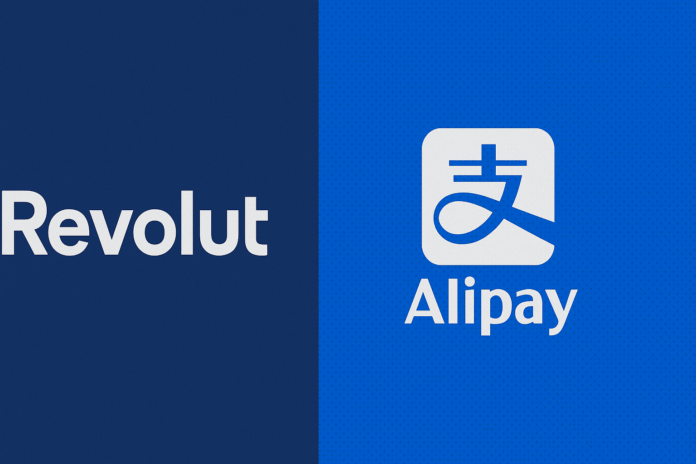Revolut has announced that it will now allow its users to send money directly to Chinese bank accounts via Alipay, one of China’s most widely used payment platforms. The move, reported by Finextra, marks a significant expansion of Revolut’s global remittance capabilities, but also raises important questions about cross-border compliance, data governance, and the geopolitics of fintech.
What’s New?
Revolut users can now make remittance transfers to Chinese recipients through Alipay, targeting the large diaspora population and those sending funds for education, family support, or business purposes. The integration enables local-currency transfers to over a billion Alipay users, bypassing traditional SWIFT-based routes.
This development extends Revolut’s existing partnerships with Asian payment networks, positioning it to compete more directly with incumbents like Wise, Remitly, and Western Union in the Asia-Pacific corridor.
Why It Matters
China’s domestic payment infrastructure — dominated by Alipay and WeChat Pay — has historically remained walled off from global fintechs, in part due to regulatory restrictions and data localization laws. Revolut’s access to Alipay is notable for two reasons:
- Market Penetration: It enables Revolut to reach end-users in mainland China without requiring them to hold foreign accounts.
- Strategic Leverage: It showcases Revolut’s ability to strike deals with entrenched tech giants in challenging jurisdictions.
At a time when cross-border payments remain a chokepoint in global fintech, this integration provides a low-cost, faster alternative to conventional bank wires — a sector ripe for disruption.
What Are the Risks?
Despite the business logic, there are several operational and strategic concerns:
- Regulatory Transparency: Details about how Revolut handles KYC/AML checks, data storage, and transaction monitoring in coordination with Alipay remain limited.
- Data Governance: Alipay is subject to Chinese cybersecurity and surveillance laws. It’s unclear what degree of data visibility Chinese regulators may now have into Revolut-originated transactions.
- Sanctions and Export Controls: The U.S. and EU are increasingly scrutinizing Chinese payment infrastructuredue to national security concerns. Even indirect integrations may come under review.
- Capital Controls: China imposes strict limits on foreign inflows and outflows. It’s unclear how Revolut ensures full compliance with SAFE (State Administration of Foreign Exchange) rules.
Strategic View
For Revolut, this is a calculated risk with potentially high reward. If managed carefully, it could:
- Open access to one of the largest remittance corridors in the world
- Enhance its credentials as a truly global super app
- Create new fee-based revenue streams outside of Europe
However, any compliance lapse or political misstep could threaten Revolut’s broader international ambitions — especially as it continues to seek a full UK banking licence and eyes expansion in Asia.
Conclusion
Revolut’s tie-up with Alipay is a strategic milestone, not just a product update. It reflects the ongoing fragmentation of global payments infrastructure, where agile fintechs are bridging rails between closed-loop systems.
But with that opportunity comes scrutiny. In an era of economic deglobalization and growing regulatory nationalism, connecting Western fintechs to Chinese platforms is no longer politically neutral.
The real test won’t be whether the feature works — but whether Revolut can sustain it compliantly, transparently, and geopolitically aware.



